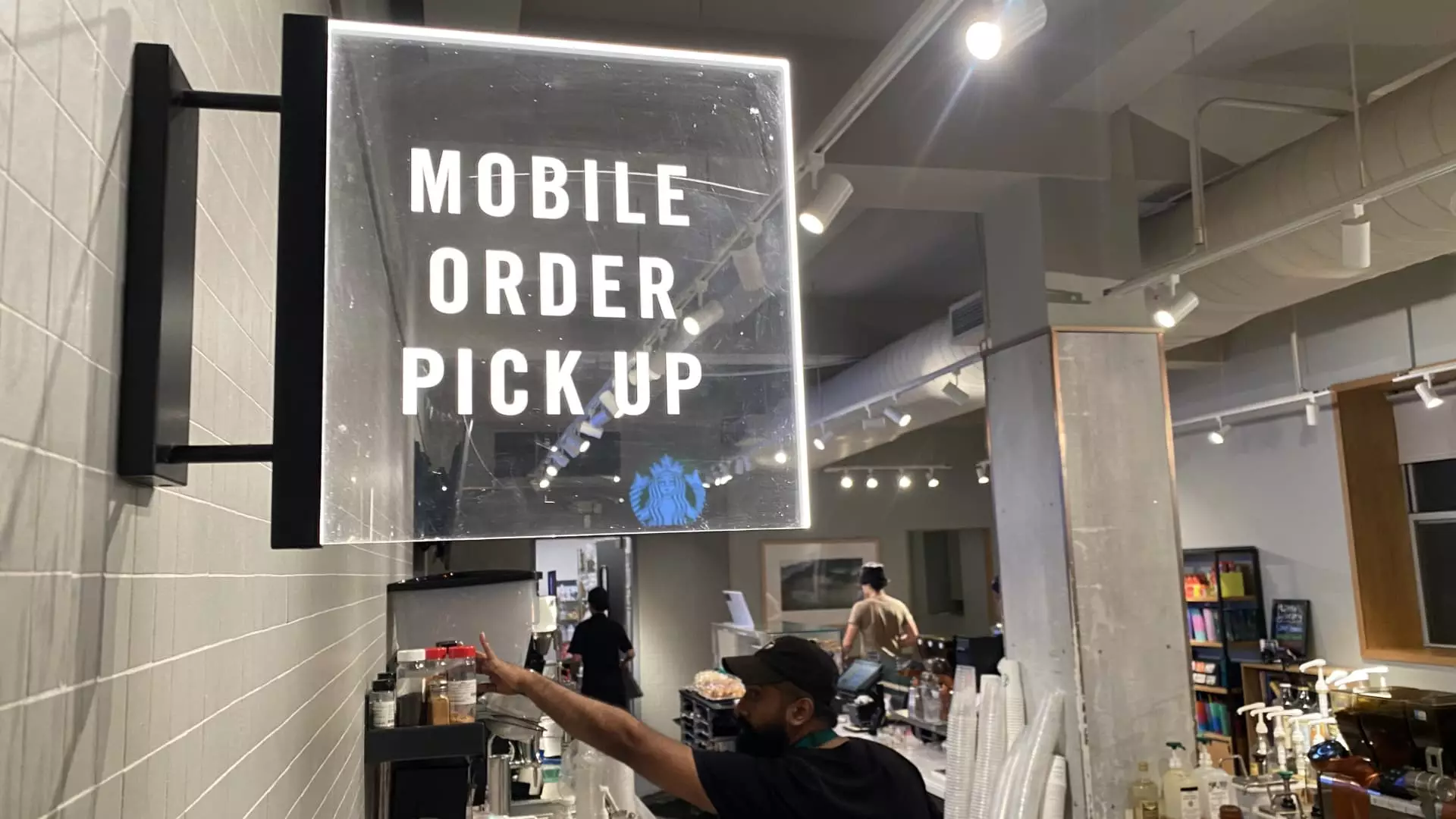In a world increasingly driven by convenience and technology, Starbucks stands at a crossroads, burdened by operational inefficiencies tied to its mobile ordering system. Incoming CEO Brian Niccol faces the Herculean task of mending these operational fissures as he steps into his role on September 9. The company has recently stumbled, with declining same-store sales influenced by various pressures: a weakened consumer base, brand loyalty erosion, and operational disarray, particularly prominent during peak hours.
The coffee giant’s counters are frequently inundated with a backlog of mobile orders. Frustration is palpable amongst customers who expect swift service, while baristas are increasingly overwhelmed by the intricacies of fulfilling complex orders through the mobile app. Former CEO Howard Schultz has criticized this application as Starbucks’ “Achilles heel,” suggesting that its very design undermines the efficiency needed in busy stores. The data substantiates this, with mobile orders constituting about one-third of Starbucks’ total sales but also introducing significant operational complexities.
Baristas lose valuable time accommodating customizations that customers desire. These options, while they boost profitability, slow down the overall process, leading to consumer frustration and a perception that the quality of service is declining. Laxman Narasimhan, the current CEO until Niccol takes over, noted the challenges of meeting demand during peak periods, and Schultz recounts witnessing the chaos firsthand during a busy morning at a Chicago location.
Traditionally, Starbucks positioned itself as a “third place” apart from home and work, a space for customers to relax and enjoy their beverages. However, as the landscape of consumer behavior shifts towards quick and efficient service often grabbed on the go, the question arises: how can Starbucks reclaim its identity while adapting to these changes? The company’s previous strategies did not accurately anticipate the demand for expedience over ambiance, leading to an awkward transition into the current era of coffee consumption.
To bolster its operational efficiency, Niccol must focus on refining the mobile ordering experience. Unconventional strategies that worked at Chipotle, such as dedicated prep lines for online orders and the introduction of drive-thru lanes exclusively for pickups, could serve as informative case studies. Chipotle has adapted remarkably well to the digital-centric consumer culture, an aspect Starbucks must embrace to regain its footing.
A critical analysis reveals that Starbucks’ central challenge is managing consumer expectations in an age dominated by instant gratification. Customers seek the convenience of mobile ordering, yet they also value efficient in-store experiences. Investors have voiced concerns about long wait times, particularly in densely populated cities like New York, where mobile orders often eclipse in-store purchases. To sway consumer sentiment, Niccol will need to reverse the prioritization of mobile orders to elevate in-person customer experiences.
Starbucks transitions should echo the adaptability exhibited by Niccol’s former employer, where innovative solutions introduced during his tenure allowed for rapid growth while maintaining quality service levels. As Starbucks builds upon existing infrastructures, it should aim to reduce bottlenecks that plague in-store service. Operational adjustments, such as advanced equipment rollout and real-time order tracking via the mobile app, could certainly limit frustration for both customers and baristas alike.
The toll on baristas cannot be understated. Stress and burnout, partially attributed to the overwhelming demands placed on them by the app’s complexities, are driving employees to seek unionization. Union efforts highlight a deeper systemic issue within the organization: the need for balance between employee welfare and operational demands. The interaction of these factors presents an opportunity for Niccol to not only improve service efficiency but also to cultivate a more sustainable work environment.
As the Starbucks landscape evolves, so too must its approach to employee engagement. Leadership must prioritize both customer experience and workforce morale, recognizing that happy employees yield happy customers. This dual focus could serve as a competitive advantage in a saturated market where staff turnover and labor satisfied by the pursuit of unions can create additional disruptions.
Looking Forward: The Path to Recovery
Overhauling the mobile ordering system is only one piece of a much larger puzzle that Niccol faces. A comprehensive reevaluation of Starbucks’ approach to technology integration, operational streamlining, and consumer engagement is paramount. While obstacles abound, historical successes from Chipotle lean on Niccol’s experience, noting that strategic innovations, such as dedicated lanes for digital orders and enhanced equipment, can significantly shift Starbucks’ trajectory back towards prosperity.
As Starbucks prepares for this significant transition, stakeholders must remain vigilant and proactive. The coffee culture that Starbucks fostered must evolve alongside the convenience-seeking consumer, or risk losing its foothold in a competitive industry. Niccol’s leadership could be the wake-up call that allows Starbucks to enhance efficiency, restore brand loyalty, and ultimately thrive in the ever-evolving marketplace.

